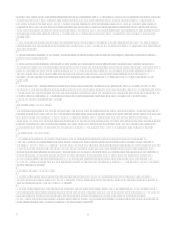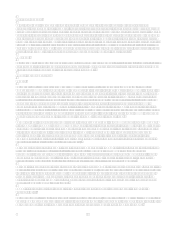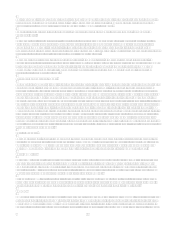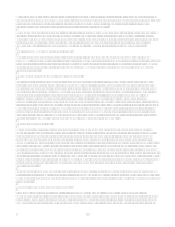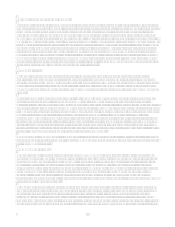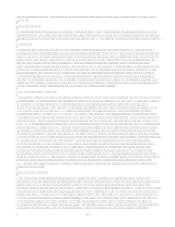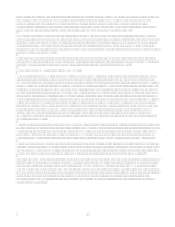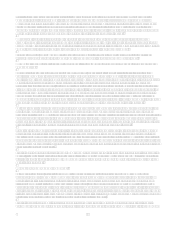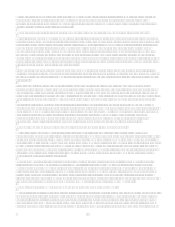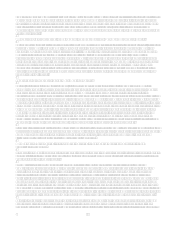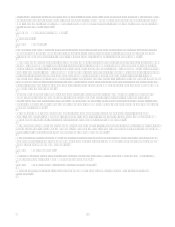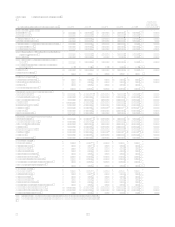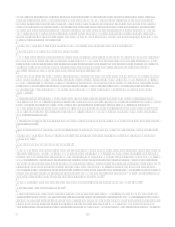Capital One 2006 Annual Report Download - page 36
Download and view the complete annual report
Please find page 36 of the 2006 Capital One annual report below. You can navigate through the pages in the report by either clicking on the pages listed below, or by using the keyword search tool below to find specific information within the annual report. 18
statements include information relating to our future earnings per share, growth in managed loans outstanding, product mix,
segment growth, managed revenue margin, funding costs, operations costs, employment growth, marketing expense,
delinquencies and charge-offs. Forward-looking statements also include statements using words such as expect,
anticipate, hope, intend, plan, believe, estimate or similar expressions. We have based these forward-looking
statements on our current plans, estimates and projections, and you should not unduly rely on them.
Forward-looking statements are not guarantees of future performance. They involve risks, uncertainties and assumptions,
including the risks discussed below. Our future performance and actual results may differ materially from those expressed in
these forward-looking statements. Many of the factors that will determine these results and values are beyond our ability to
control or predict. We undertake no obligation to publicly update or revise any forward-looking statements, whether as a
result of new information, future events or otherwise. You should carefully consider the factors discussed below in evaluating
these forward-looking statements.
This section highlights specific risks that could affect our business and us. Although we have tried to discuss key factors,
please be aware that other risks may prove to be important in the future. In addition to the factors discussed elsewhere in this
report, among the other factors that could cause actual results to differ materially are the following:
We Face Intense Competition in All of Our Markets
We operate in a highly competitive environment, and we expect competitive conditions to continue to intensify as merger
activity in the financial services industry continues to produce larger, better capitalized and more geographically diverse
companies that are capable of offering a wider array of financial products and services at better prices. In such a competitive
environment, we may lose entire accounts, or may lose account balances, to competing financial institutions, or find it more
costly to maintain our existing customer base. Customer attrition from any or all of our lending products, together with any
lowering of interest rates or fees that we might implement to retain customers, could reduce our revenues and therefore our
earnings. Similarly, customer attrition from our deposit products, in addition to an increase in rates and/or services that we
may offer to retain those deposits, may increase our expenses and therefore reduce our earnings. We expect that competition
will continue to grow more intensely with respect to most of our products. Some of our competitors may be substantially
larger than we are, which may give those competitors advantages, including a more diversified product and customer base,
the ability to reach out to more customers and potential customers, operational efficiencies, more versatile technology
platforms, broad-based local distribution capabilities, lower-cost funding, and larger existing branch networks. These
competitors may also consolidate with other financial institutions in ways that enhance these advantages and intensify our
competitive environment.
With respect to our credit card business, we compete primarily with respect to price (primarily interest rates and fees), credit
limit and other product features. Larger, better capitalized companies may be able to offer credit cards at better rates and with
more attractive features than we can offer. Our other consumer lending businesses, including auto lending, small business
lending, home loan lending, installment lending, our commercial lending businesses, and our businesses in international
markets also compete on a similar variety of factors, including price, loan terms, product features and customer service.
Our banking business competes with national and state banks for deposits, loans, and trust accounts, and also competes with
other financial services companies in offering various types of financial services. In addition, technological advances and the
growth of e-commerce have made it possible for non-depository institutions to offer products and services that traditionally
were banking products and services. Deposit customers are also sensitive to price and service level competition.
In addition, we compete on the basis of transaction execution, innovation and technology. Our industry is subject to rapid and
significant technological changes. In order to compete in our industry, we must continue to invest in technologies across all
of our businesses, including transaction processing, data management, customer interactions and communications and risk
management and compliance systems. We expect that new technologies will continue to emerge, and these new services and
technologies could be superior to or render our technologies obsolete. Our future success will depend in part on our ability to
continue to develop and adapt to technological changes and evolving industry standards. If we are not able to invest
successfully in and compete at the leading edge of technological advances across all of our businesses, our revenues and
profitability could suffer.


